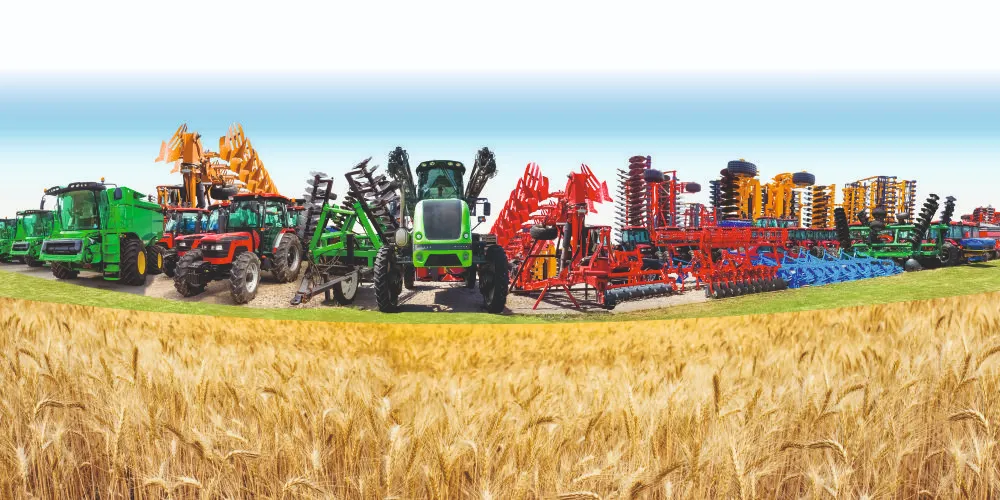Agriculture is the backbone of many African economies, providing employment and income for millions of people. However, the sector faces numerous challenges, including limited access to agricultural machinery. This constraint hinders farmers’ ability to increase productivity, efficiency, and profitability. In this article, we will explore the importance of improving access to agricultural machinery in Africa and discuss potential solutions to address this challenge.
The Importance of Agricultural Machinery in Africa
Agricultural machinery plays a critical role in modern farming, enabling farmers to cultivate, plant, and harvest crops more efficiently and effectively. In Africa, where agriculture is largely manual and labor-intensive, access to machinery can significantly improve farm productivity and reduce labor costs.
Some of the key benefits of agricultural machinery in Africa include:
- Increased productivity: Mechanization can help farmers to cultivate and harvest larger areas of land, leading to increased crop yields and higher incomes.
- Improved efficiency: Machinery can reduce the time and labor required for farming tasks, allowing farmers to focus on other activities, such as marketing and entrepreneurship.
- Enhanced food security: By increasing crop yields and improving farm productivity, agricultural machinery can help to enhance food security in Africa.
- Job creation: The use of agricultural machinery can create new job opportunities in rural areas, including mechanics, operators, and technicians.
Challenges Facing Access to Agricultural Machinery in Africa
Despite the importance of agricultural machinery in Africa, many farmers face significant challenges in accessing these critical tools. Some of the key challenges include:
- High costs: Agricultural machinery is often expensive, making it unaffordable for many smallholder farmers in Africa.
- Limited availability: In many rural areas, agricultural machinery is scarce, and farmers may have to travel long distances to access these services.
- Lack of maintenance and repair services: Inadequate maintenance and repair services can lead to machinery breakdowns, reducing their effectiveness and increasing costs.
- Limited access to credit and financing: Many farmers in Africa lack access to credit and financing, making it difficult for them to purchase or lease agricultural machinery.
Potential Solutions to Improve Access to Agricultural Machinery in Africa
To address the challenges facing access to agricultural machinery in Africa, several potential solutions can be explored. These include:
- Mechanization services: Establishing mechanization services, where farmers can hire machinery and equipment, can help to reduce costs and increase access.
- Leasing and rental models: Leasing and rental models can provide farmers with access to machinery without the high upfront costs of purchasing.
- Microfinance and credit schemes: Microfinance and credit schemes can help farmers to access credit and financing to purchase or lease agricultural machinery.
- Public-private partnerships: Public-private partnerships can help to increase access to agricultural machinery by leveraging private sector investment and expertise.
- Training and capacity building: Training and capacity building programs can help farmers to develop the skills and knowledge needed to operate and maintain agricultural machinery.
- Agricultural mechanization policies: Governments can develop policies and regulations that support agricultural mechanization, such as tax incentives, subsidies, and tariffs.
Case Studies: Successful Initiatives to Improve Access to Agricultural Machinery in Africa
Several initiatives have been successful in improving access to agricultural machinery in Africa. These include:
- The African Agricultural Mechanization Initiative (AAMI): AAMI is a continental initiative that aims to enhance agricultural mechanization in Africa. The initiative provides a framework for governments, private sector companies, and other stakeholders to work together to increase access to agricultural machinery.
- The Mechanization Services Pilot Project in Ghana: This project, implemented by the Ghanaian government and the International Fund for Agricultural Development (IFAD), provided mechanization services to smallholder farmers in Ghana. The project helped to increase crop yields, reduce labor costs, and improve farmers’ incomes.
- The Agricultural Mechanization Project in Rwanda: This project, implemented by the Rwandan government and the African Development Bank (AfDB), aimed to increase access to agricultural machinery in Rwanda. The project provided training and capacity building programs for farmers, as well as credit and financing schemes to support the purchase of machinery.
Conclusion
Improving access to agricultural machinery is critical to unlocking Africa’s agricultural potential. By increasing productivity, efficiency, and profitability, agricultural machinery can help to enhance food security, reduce poverty, and promote economic growth. To achieve this goal, it is essential to address the challenges facing access to agricultural machinery, including high costs, limited availability, and lack of maintenance and repair services. By exploring potential solutions, such as mechanization services, leasing and rental models, microfinance and credit schemes, public-private partnerships, training and capacity building programs, and agricultural mechanization policies, we can increase access to agricultural machinery and promote agricultural development in Africa

